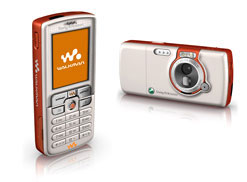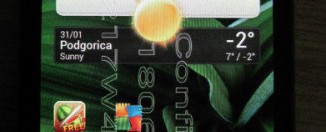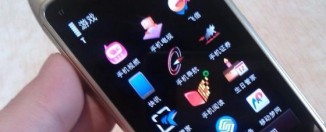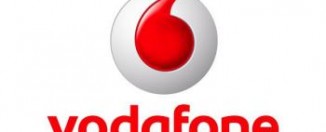MobSharing – Coming to a StarBucks near you

2005 is clearly the year of the music mobile phone. SonyEricsson has branded its new W800i with the legendary Walkman brand; Motorola is teaming up with Apple to bring an iPod phone; and Nokia, musically brandless but with its finger on the jugular, let alone the pulse, is offering the N91, with a hard-disk, and the ability to share music files using Bluetooth, Email, EDGE, GPRS, 3G, and even WLAN.
These devices, and the path they’re leading mobile phones down, have an unprecedented opportunity to reshape not just the MP3 device industry, but the music industry and even the high street shopping experience. Forget Flash-Mobs, forget filesharing: brace yourself for the new concept of MobSharing – it’s only a matter of time before it’ll be coming to a Starbucks near you.
Mobile Phones, the great MP3 device killer
These new devices are just the first wave of handsets to offer complete MP3 playing abilities. The current crop of standalone MP3 devices now have a shelf life of what…a year, maybe two, before they become worthless commodities, with a value of no more than £5. The music-playing functionality of these devices is being completely integrated into mobile phones, and now it’s started in earnest with this year’s must-haves, the technology will soon be in every mobile phone.
The remorseless power of Convergence
But the incorporation of digital cameras into mobile phones hasn’t killed off the stand-alone digital camera market, you may think. No, but that market is different: stand-alone digitial cameras can add value with enhanced technology and end-results that a mobile phone camera cannot match. Aside from the increased resolution (the latest crop of mobile phones offer 2 MegaPixels – the entry level digital camera is currently 5 MegaPixels, with the top-of-the-line models offering 8+ Megapixels), digital cameras offer a wide range of lens and flash options, optical zooms rather than digital zooms, etc. This functionality is far removed from the requirements of a mobile phone’s camera, leaving room in the market for these devices. Not so with the humble MP3 player, however.
MP3 players, particularly those based on solid state flash memory, offer nothing that cannot be provided by a mobile phone. Worse, the mobile phone offers something that a stand-alone MP3 device cannot provide: connectivity. Download your music without having to hook your device up to your PC. Download music directly from online music stores without first having to download it onto your PC. Share your music files instantly with your friends via Bluetooth, or even WLAN. So much more convenient than an increasingly old-looking stand-alone MP3 device. Worse, given that today’s new mobile phone technology is quickly incorporated into all subsequent handsets, in a year or two, all mobile phones will have music playing abilities that at least match today’s MP3 device. So, you have a mobile phone that plays MP3 files better than your stand-alone MP3 player – you buy an MP3 player because…? Convergence in action!
The trembling music exec
Now, this might be a problem for the MP3 device manufacturers (apart form those selling their technologies to the mobile phone manufacturers, of course), but it’s an even bigger potential headache for the music execs. The new devices all focus on connectivity: the ability not just to download and listen to your music, but to share it with your friends. Bluetooth, Email, even Wireless LAN, can all be used to share music on the new Nokia N91, and it can’t be long before other manufacturers follow suit. So, completely untraceable file sharing between two devices – music exec’s ears prick up, but sharing between two devices does not mean panic-induced law suits just yet.
But hold on, music exec: think of many people together in a crowd. Picture the same crowd in a WLAN hotspot, each member of the crowd with a mobile phone with WLAN connectivity, and a big menu option on every device saying ‘share music files to anyone over WLAN: ON’. You want new music? Go to Starbucks, hook up to their WLAN, see what everyone else has on their mobile phone. Not got what you want? Come back in an hour, see what the new crowd has. Still not got what you want? Try another hotspot – there are hundreds to choose from!
MobSharing – the convergence of file sharing and flash-mobs
What these new devices provide, if not now then in the very near future, is the ability for people to come together and form their own ad hoc Personal P2P file-sharing network. It’s the Perfect Storm of two converging phenomena – File sharing and Flash-Mobs (crowds of people spontaneously coming together to perform some arbitrary task arranged by some media-hungry controller – see image, right) – that together lead to the new concept of MobSharing: crowds of people lurking round WLAN hotspots, becoming part of an extremely local, transient P2P file-sharing network. What’s that? The sound of a music exec’s throat constricting? Completely uncontrollable ubiquitous ad-hoc file-sharing – hmmm, sounds more like a heart-attack to me!
Transforming the Shopping Experience
From a societal perspective, this has the potential to open up a completely new dimension to the high street shopping experience. Think of the main reasons people engage in file-sharing: it’s not just the almost-unlimited access to the music and other files, it’s the way that access is provided. You have an always-on broadband connection. You type in a search term, and hundreds of files are revealed, but crucially, you can’t access them all immediately. So you select a large set of the files you want, and go to work, or to school, leaving your computer on to download what it can. What you get when you come back from work is a random collection of surprises, all of which are what you’d like. It’s like the music postman, but without the bills: you never know what’s going to be delivered, but all of it’s good! The element of surprise, and the constant novelty of the shifting collection of files is what makes file-sharing so appealing. Don’t like what you see today? Then try again tomorrow, hook up to a different set of servers, and see what else can be found with the same search term. Glorious!
MobSharing – coming to a Starbucks near you!
Now apply the same logic to MobSharing. Go to your local shopping mall, drift into Starbucks, see what files are there. Always different, always changing. Don’t like what’s there? Do your shopping, come back for a coffee, see what files are there now. Constant novelty, constant surprise. Hunter-gatherer in the 21st century! Music industry transformed, shopping malls transformed, society enriched, and all thanks to the humble mobile phone.









Excellent article, Mike. I linked to it from my blog http://m-trends.org
[…] We heard about the Mobile Web, Mobcasting, MoSoSo, etc. but this one beats them all: Mike Evans of Mobilementalism wrote an interesting article about MobSharing. Meanwhile Smartmobs and the Mobile Technology Weblog wrote about it too. The birth of a new hypeword or are we really that close to it? […]
[…] and make you want to try out things immediately before others. MobSharing, a term originally coined by Mike Evans in September 2005, didn’t figure in my 2007 predictions but was already […]
[…] a term originally coined by Mike Evans in September 2005, didn’t figure in my 2007 predictions but was already […]
[…] a term originally coined by Mike Evans in September 2005, didn’t figure in my 2007 predictions but was already […]
[…] a term originally coined by Mike Evans in September 2005, didn’t figure in my 2007 predictions but was already […]